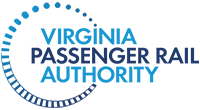Transforming Rail in Virginia is a $4 billion rail initiative that creates a path forward to connecting our communities and increasing economic opportunities through strategic investments in rail. Virginia’s partners in the program include Amtrak, CSX Transportation (CSXT), Norfolk Southern, and Virginia Railway Express (VRE).
Transforming Rail in Virginia:
- Develops capital projects and acquires railroad track and right-of-way to provide more rail capacity
- Expands high-quality modern passenger rail service across the Commonwealth by making it more frequent, reliable, and convenient
- Provides Virginians choice in moving people and goods efficiently through transportation corridors while accommodating growing travel demand
In addition, Transforming Rail in Virginia includes the Station Modernization Program, which improves the passenger experience across Virginia’s stations.
The Commonwealth of Virginia promotes multimodal solutions to moving people and goods efficiently through transportation corridors. Virginia’s interstate capacity is continuing to decline and the demand for additional rail service continues to increase. Across Virginia and the Washington Metropolitan Region, auto travelers experience 320 million hours of delay annually due to congestion, resulting in $6.5 billion in annual congestion costs.1 Current conditions and increasing demand mean more throughput capacity is needed in Virginia’s interstate corridors, and passenger rail provides the most cost-effective solution in the short and long term.
At the same time, passenger rail performance cannot improve, and services cannot grow, without expanding the existing infrastructure. Amtrak, Virginia Railway Express (VRE), and freight trains suffer delays repeatedly from train interference due to congestion on the railroad. The current Long Bridge over the Potomac River is one of the most significant rail bottlenecks along the entire East Coast of the United States. Long Bridge is currently at 98 percent capacity during the peak period.
Population in the Transforming Rail in Virginia corridors and adjacent urban regions continues to grow, increasing demand for reliable and safe travel options for passengers. Between 2030 and 2040, Virginia’s population is expected to increase from 8.7 million to 10.2 million.2 In addition to overall population growth, changing demographics in the corridor and adjacent urban regions are increasing the demand for passenger rail service. Population growth is forecast to be highest in the corridor from Washington, DC, to Richmond to Hampton Roads and to disproportionately include young professionals and people over the age of 65.
Demand for freight movement through and within the corridor also is growing. The Port of Virginia is the eighth-largest port by tonnage in the United States and one of the fastest-growing ports on the East Coast.3 Over the next 20 years, containerized cargo volume coming into the United States is expected to triple. A large proportion of port cargo arrives or departs by rail. Ongoing expansion of Virginia’s deep-water ports and intermodal facilities, and the planned construction of the new Craney Island Marine Terminal, further increases the need for efficient freight shipping.
Infrastructure improvements are needed to meet both existing and growing future demand for freight and passenger rail service in the corridor to improve mobility for Virginians.
1 Texas Transportation Institute, 2019 Urban Mobility Report. https://mobility.tamu.edu/umr/congestion-data/
2 University of Virginia’s Weldon Cooper Center for Public Service. https://news.virginia.edu/content/population-projections-virginia-expected-become-10th-largest-state-2040
3 DC to Richmond Southeast High Speed Rail Tier II Draft Environmental Impact Statement. 2017.
- Virginia Passenger Rail Authority (VPRA)
- Virginia Department of Rail and Public Transportation (DRPT)
- Amtrak
- CSX Transportation (CSXT)
- Norfolk Southern Railroad
- Virginia Railway Express (VRE)
- Buckingham Branch Railroad Company (BBRC)
Each entity will have roles in Transforming Rail in Virginia to deliver and participate in projects to improve the reliability and frequency of passenger and freight rail services.
The Virginia Passenger Rail Authority (VPRA) is an independent authority created by the Virginia General Assembly in 2020 that, among other responsibilities, is responsible for delivering Transforming Rail in Virginia. The authority is dedicated to managing, funding, and growing statewide rail services and will partner with Amtrak to fund intercity passenger rail operations. VPRA has the authority to own and acquire rail infrastructure. The authority is governed by a statewide, geographically diverse board. VPRA will not operate passenger trains and will work with Amtrak (intercity passenger rail operator) and VRE (commuter rail operator), which are represented on the VPRA Board of Directors.
The Board is made up of 12 voting members, 1 ex-officio member from Amtrak, 1 ex-officio member from Virginia Railway Express (VRE), and the Director of the Department of Rail and Public Transportation (DRPT), who serves as Chairperson. VPRA legislation requires the Board meet quarterly, at a minimum. While the Board is staffing up the organization, DRPT is providing services to VPRA on a temporary basis. DRPT also provides support to the VPRA Board.
Transforming Rail in Virginia allows the Commonwealth to double Amtrak state-supported service and significantly increase Virginia Railway Express (VRE) Fredericksburg Line and Manassas Line service (including first-time-ever weekend and late-night service) during the next decade. The additional Manassas Line service is subject to agreement with Norfolk Southern since these trains operate on both CSXT- and Norfolk Southern-owned tracks.
Virginia’s Partnership with Amtrak, CSXT, and VRE (DC to Hampton Roads)
In partnership with CSX Transportation (CSXT), Virginia will build 37 miles of track and implement a series of infrastructure improvements in the Richmond to Washington, DC, corridor (including a new, two-track Long Bridge for passenger trains) to improve the reliability and frequency of passenger rail in the corridor. One new Amtrak round trip between Washington, DC, and Norfolk, VA, and one new round trip on VRE’s Fredericksburg Line will commence in the next year. Additional service will come online during the next decade incrementally as capacity improvements are completed. By the end of 2030, Amtrak service will double and VRE Fredericksburg Line service will increase by 75%.
Virginia’s Partnership with Norfolk Southern (DC to New River Valley)
In partnership with Norfolk Southern, a second state-supported Amtrak train will be added to the route between Washington, DC and Roanoke, and passenger rail will be extended to the New River Valley. Like the current state-supported Roanoke train, the second train will serve Alexandria, Burke, Manassas, Culpeper, Charlottesville, Lynchburg, and Roanoke and travel to and from Washington, DC, and Amtrak’s Northeast Corridor. Infrastructure improvements will be made in coming years to allow the extension to the New River Valley, as well as add a 7-mile double-track south of Manassas to improve train fluidity along the corridor. Additionally, a study to determine the infrastructure required for a Bedford station will be undertaken.
Buckingham Branch Railroad (BBRR)
Virginia is acquiring nearly all the CSXT-owned right-of-way (164 miles) and track (179 miles) between Doswell, VA, and Clifton Forge, VA, paving the way for future consideration of passenger rail service in central Virginia.
S-Line (Petersburg to Raleigh, NC)
Virginia is acquiring all the CSXT-owned but out-of-service right-of-way (75 miles) between Petersburg, VA, and Ridgeway, NC (S-Line). The S-Line in North Carolina extends from Ridgeway to Raleigh, NC. With this acquisition, the Commonwealth may consider future passenger rail service in the corridor.
Station Modernization
The Commonwealth is undertaking upgrades consistent with the Americans with Disabilities Act (ADA) and will seek to partner with localities, Amtrak, and VRE to determine if other improvements could be undertaken to provide better customer amenities.
Transforming Rail in Virginia will be implemented through a series of capital improvements that directly relate to service enhancements.
Virginia’s Partnership with Amtrak, CSXT, and VRE (DC to Hampton Roads)
Improvements include:
- a new, passenger-dedicated, two-track Long Bridge in Washington, DC;
- construction of 14 miles of mainline track; and
- construction of six sidings and a new bypass that will allow passenger trains to cross to the other side of the corridor without interfering with freight tracks.
Two of the four phases of infrastructure improvements, Phases 1 and 2, are funded and will be built out in the next 10 years. As improvements are completed, the additional capacity will allow more passenger rail service to come online. Future phases will allow for further separation of passenger and freight rail services, resulting in improved reliability and capacity.
Virginia’s Partnership with Norfolk Southern (DC to New River Valley)
Upon purchase of the Virginian Line (V-Line), the Commonwealth and Norfolk Southern will develop improvements between Salem and Christiansburg to accommodate passenger rail service. Foundational improvements include a new passenger station and platform near Christiansburg, for which the Commonwealth expects to partner with localities in the New River Valley on construction of a station building, parking, and access to the station. Improvement projects also include a new maintenance and storage facility, bypass tracks in the Roanoke Yard so passenger trains can get through the yard, track improvements between Salem and Christiansburg, and a 7-mile siding from Nokesville to Calverton that will result in a continuous 22-mile, two-track corridor from Manassas to Remington. Transforming Rail in Virginia will study the potential for a future station at Bedford, which would be subject to future funding availability for design and construction.
Station Modernization
Station modernization will be implemented as part of the Virginia Passenger Rail Authority’s (VPRA) ongoing capital programming process. Virginia Railway Express (VRE) is a partner in implementing station improvements at stations served by commuter rail. Learn more about station projects on the Virginia Railway Express website.
Transforming Rail in Virginia implements strategic rail investments through several initiatives and programs aimed at enhancing our communities and increasing economic opportunities. As of June 2021, Transforming Rail in Virginia investments are estimated at approximately $3.9 billion. A combination of federal, state, and local/regional funding sources have been identified to fund Transforming Rail in Virginia and additional funds have been secured through agreements with funding partners.
Transforming Rail in Virginia costs do not include operations and maintenance costs; however, operations and maintenance costs for the new service and new infrastructure have been separately accounted for and funding has been identified in the Transforming Rail in Virginia financial plan.
VPRA will work with program partners to deliver consistent messaging that engages diverse stakeholders. In addition to program-level communications, which will include regular project briefings, various project development activities such as design public hearings, right-of-way acquisition, and construction notification will be coordinated. To stay informed, sign up for our email list.
The corridor is generally designed to fit four rail tracks within the existing CSX Transportation (CSXT) right-of-way (with the exception of downtown Ashland and downtown Richmond); however, there may be circumstances where it is in the best interest of the project to acquire small amounts of right-of-way. These circumstances will be evaluated on a case-by-case basis.

